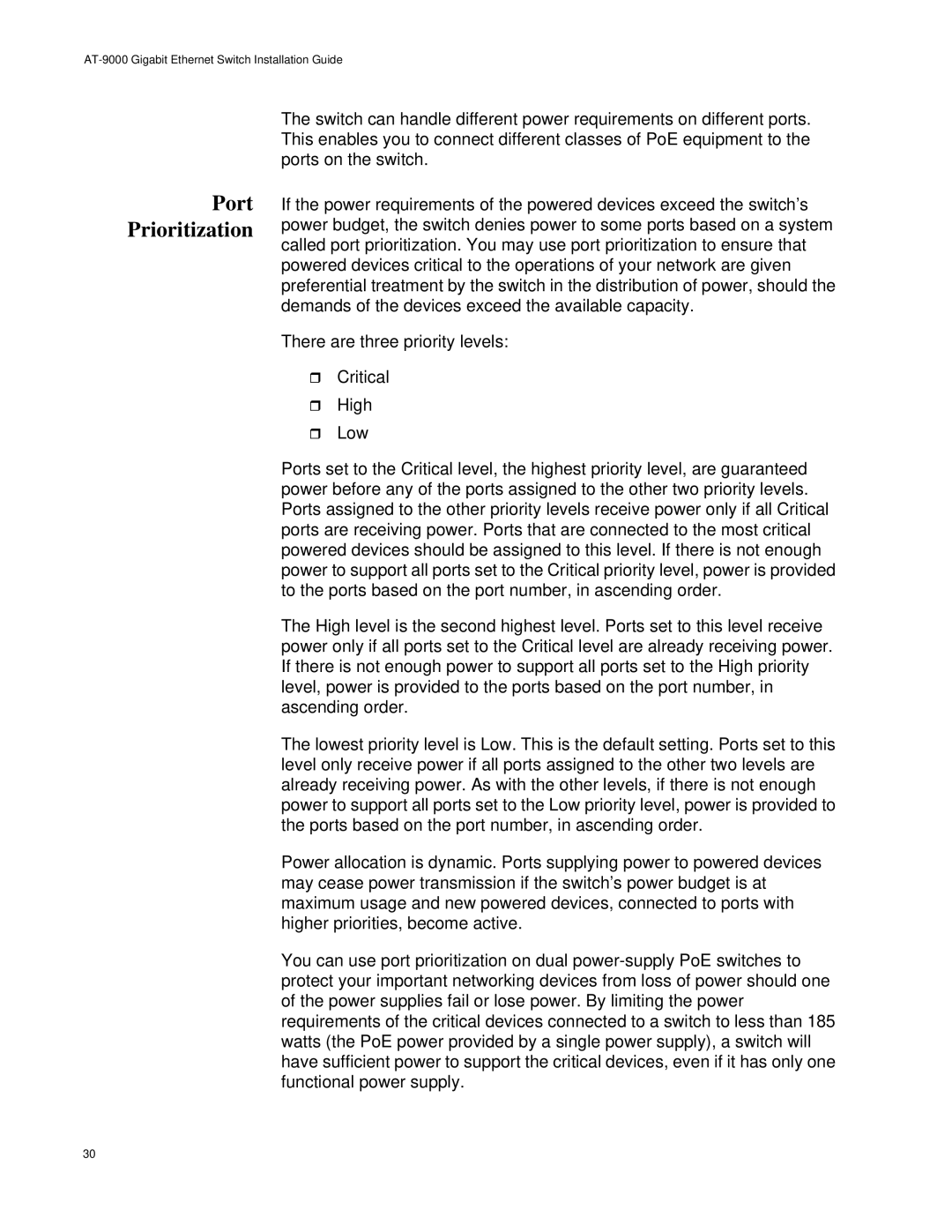AT-9000 Gigabit Ethernet Switch Installation Guide
Port Prioritization
The switch can handle different power requirements on different ports. This enables you to connect different classes of PoE equipment to the ports on the switch.
If the power requirements of the powered devices exceed the switch’s power budget, the switch denies power to some ports based on a system called port prioritization. You may use port prioritization to ensure that powered devices critical to the operations of your network are given preferential treatment by the switch in the distribution of power, should the demands of the devices exceed the available capacity.
There are three priority levels:
Critical
High
Low
Ports set to the Critical level, the highest priority level, are guaranteed power before any of the ports assigned to the other two priority levels. Ports assigned to the other priority levels receive power only if all Critical ports are receiving power. Ports that are connected to the most critical powered devices should be assigned to this level. If there is not enough power to support all ports set to the Critical priority level, power is provided to the ports based on the port number, in ascending order.
The High level is the second highest level. Ports set to this level receive power only if all ports set to the Critical level are already receiving power. If there is not enough power to support all ports set to the High priority level, power is provided to the ports based on the port number, in ascending order.
The lowest priority level is Low. This is the default setting. Ports set to this level only receive power if all ports assigned to the other two levels are already receiving power. As with the other levels, if there is not enough power to support all ports set to the Low priority level, power is provided to the ports based on the port number, in ascending order.
Power allocation is dynamic. Ports supplying power to powered devices may cease power transmission if the switch’s power budget is at maximum usage and new powered devices, connected to ports with higher priorities, become active.
You can use port prioritization on dual
30
